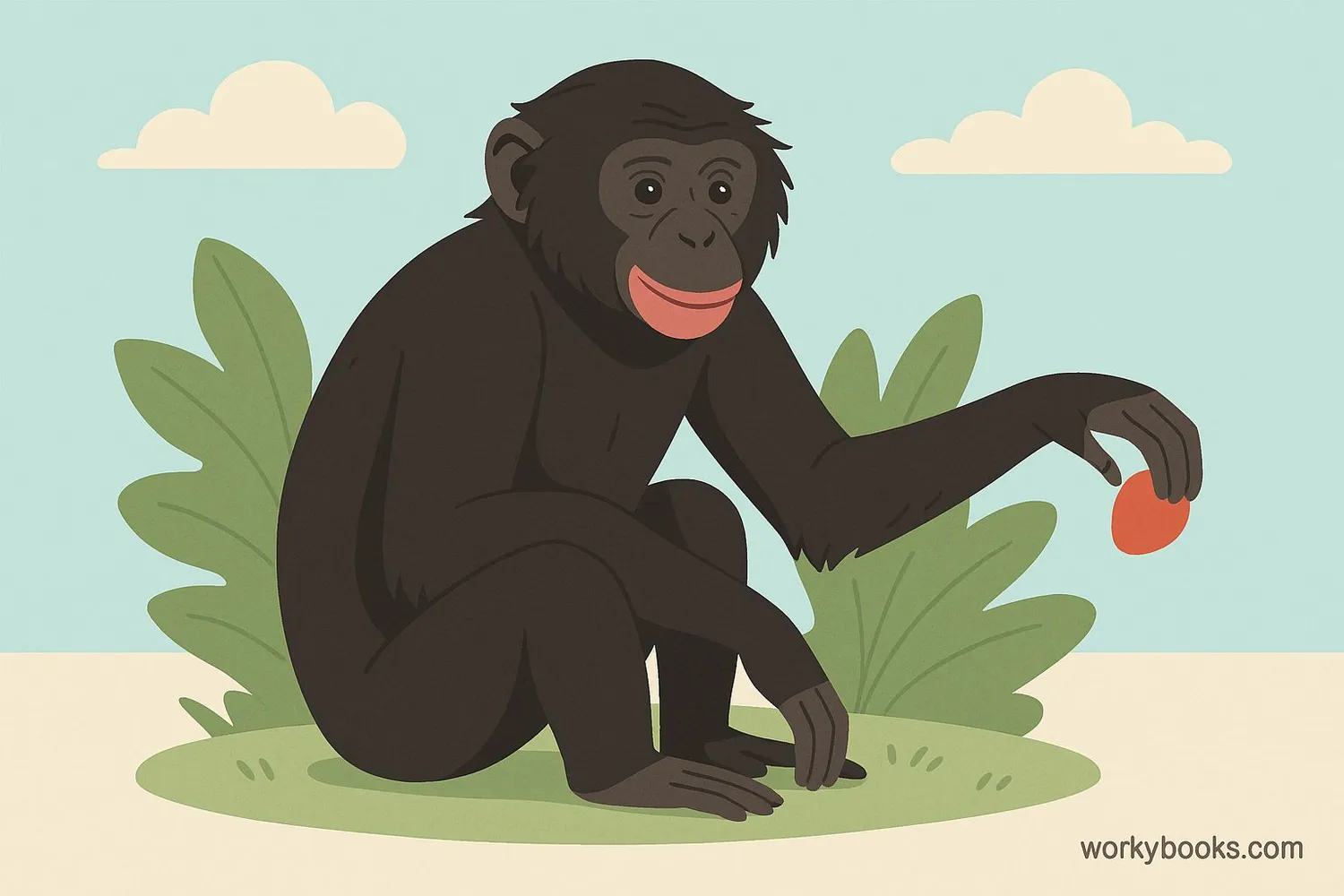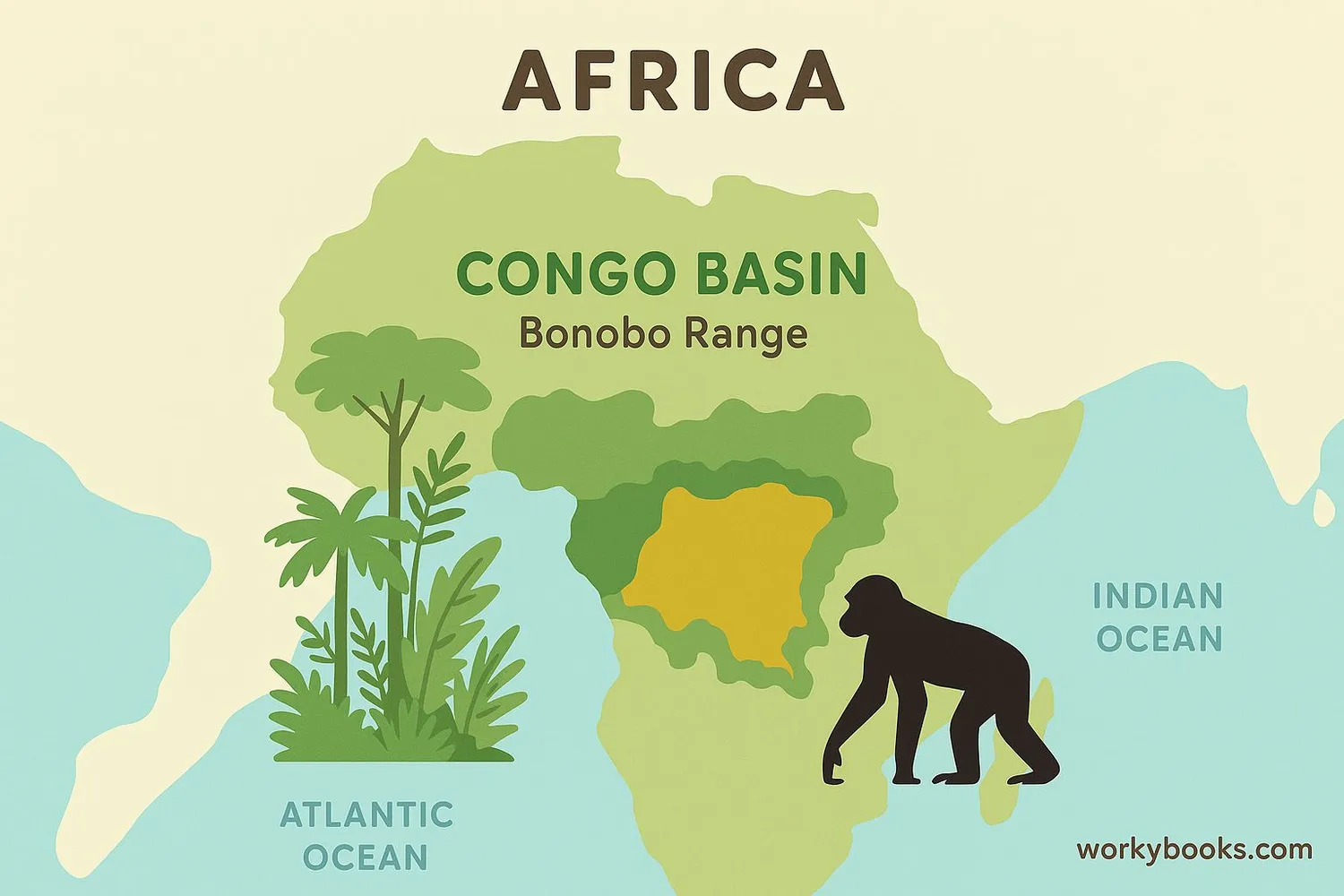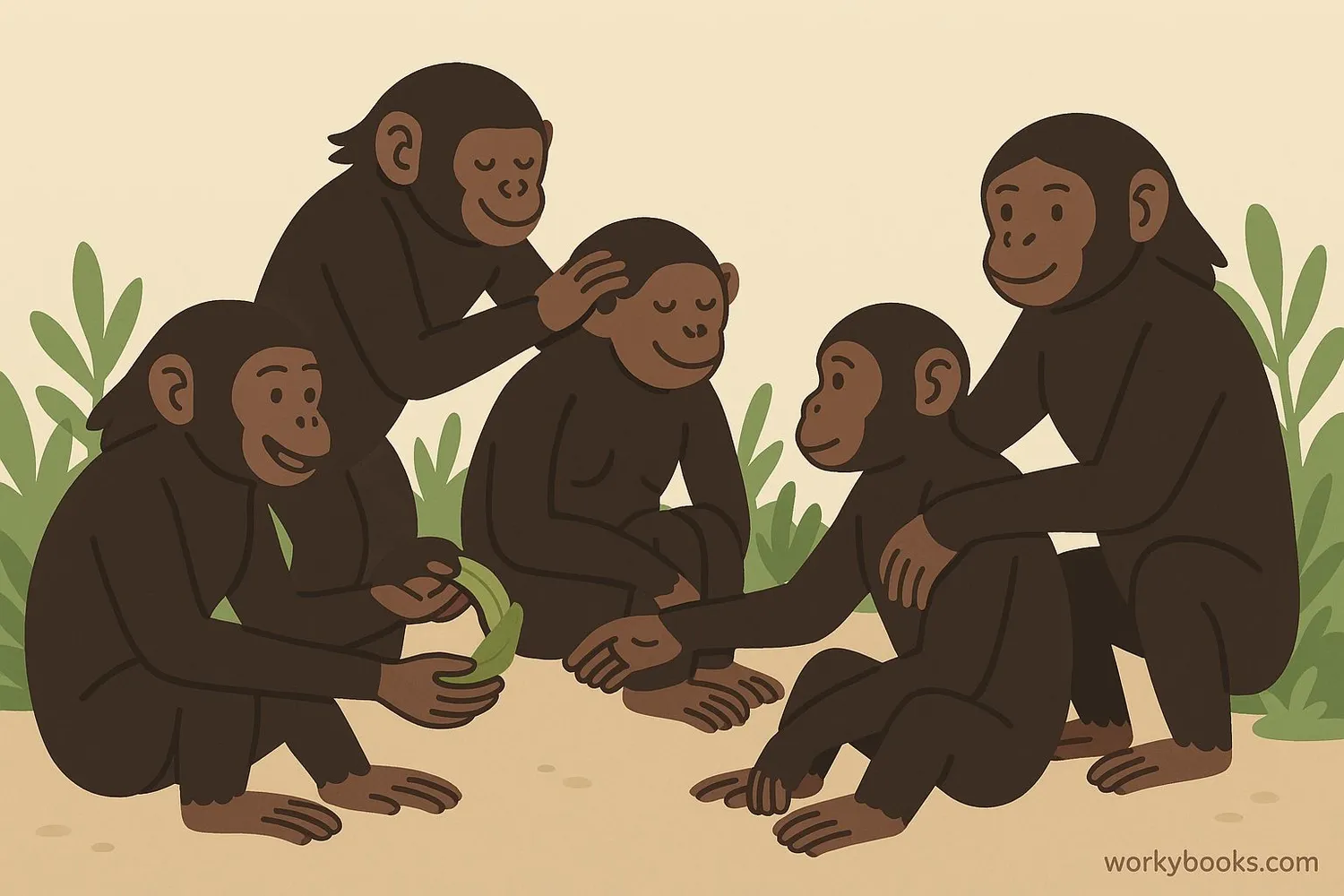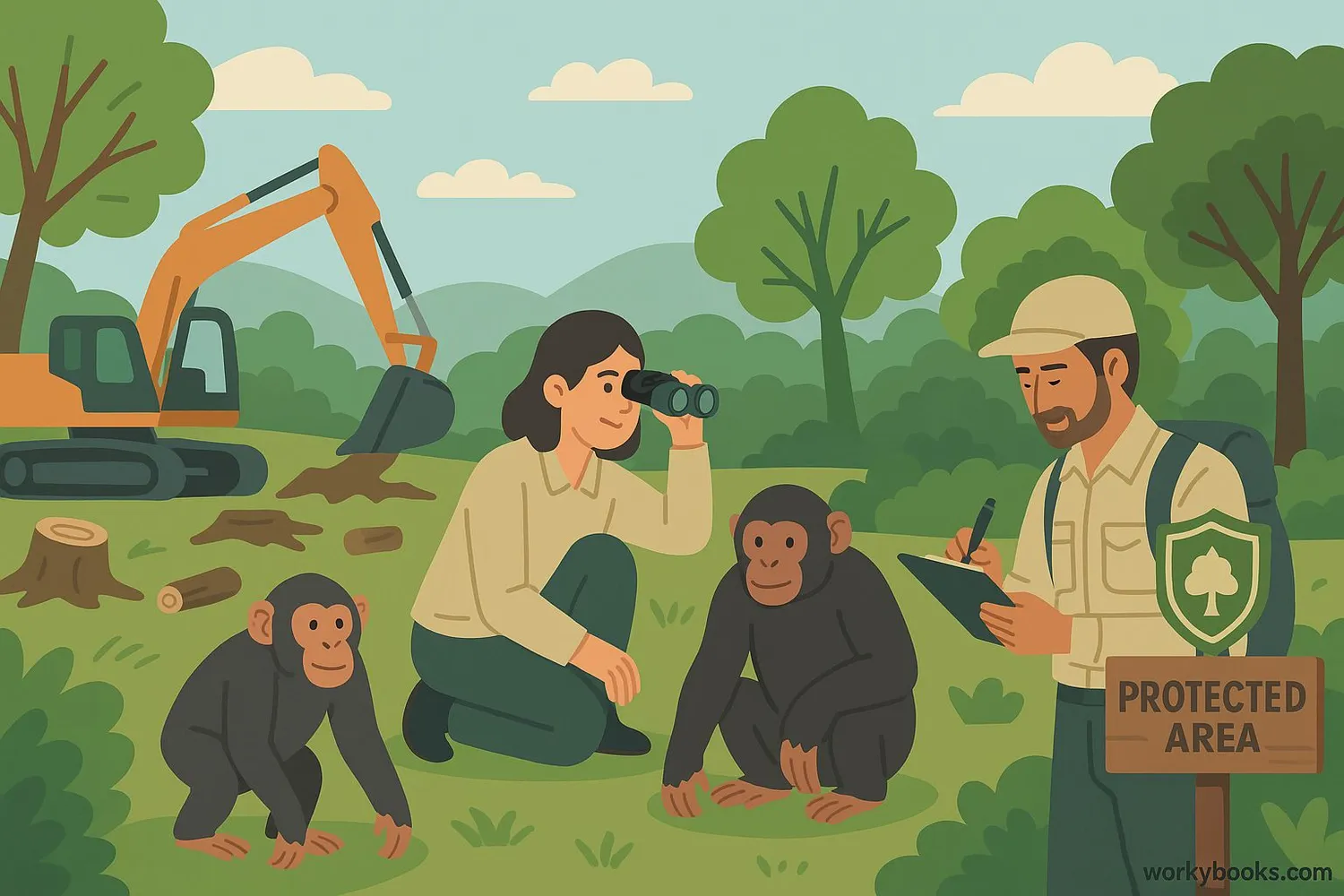Bonobos - Definition, Examples, Quiz, FAQ, Trivia
Discover these amazing apes that share 98.7% of our DNA
What Are Bonobos?

Bonobos (Pan paniscus) are one of our closest living relatives, sharing 98.7% of our DNA! These intelligent apes are often confused with chimpanzees, but they have distinct differences:
Physical Features
Black hair, pink lips, long legs, and a slender build
Size
Smaller than chimpanzees, standing about 3-4 feet tall
Behavior
More peaceful and social than chimpanzees
Social Structure
Matriarchal (led by females) society
Did You Know?
Bonobos were recognized as a separate species from chimpanzees only in 1929! Before that, scientists thought they were the same.
Habitat & Diet

Bonobos live in only one place on Earth - the rainforests of the Democratic Republic of Congo in Central Africa. Their habitat is south of the Congo River, which separates them from chimpanzees.
Diet
Primarily fruits (57%), plus leaves, seeds, flowers, and occasionally small animals
Habitat
Dense tropical rainforests with plenty of fruit trees
Threats
Habitat loss and hunting are their biggest dangers
Bonobos are arboreal (tree-dwelling) but also spend time on the ground. They build sleeping nests in trees each night from branches and leaves. Unlike chimpanzees, bonobos don't use tools as much, but they're just as intelligent!
Social Behavior

Bonobos have one of the most fascinating social structures in the animal kingdom:
Matriarchal Society
Females lead the groups and form strong bonds
Conflict Resolution
Use affection rather than aggression to solve disputes
Food Sharing
Often share food, even with unrelated bonobos
Communication
Use sounds, facial expressions, and gestures
Peaceful Primates
Bonobos are sometimes called "hippie apes" because they prefer making love, not war! Scientists study them to understand human peacemaking.
Conservation Status

Bonobos are endangered, with only about 15,000-20,000 left in the wild. Their survival is threatened by:
Habitat Loss
Rainforests are being cleared for agriculture and logging
Hunting
Hunted for bushmeat despite being protected by law
Human Conflict
Political instability in Congo makes protection difficult
Conservation efforts include:
• Creating protected areas and national parks
• Supporting local communities to reduce hunting
• Scientific research and monitoring
• Education programs about bonobo protection
Many organizations work to save bonobos, but they need our help to survive!
Bonobo Knowledge Check
Test what you've learned about these amazing primates with this quiz!
Frequently Asked Questions
Here are answers to common questions about bonobos:
Bonobo Trivia
Discover some amazing facts about bonobos!
Close Relatives
Bonobos and chimpanzees are equally close to humans genetically, sharing about 98.7% of our DNA. The three species share a common ancestor from about 6-7 million years ago.
Language Skills
Bonobos can understand spoken English at the level of a 2-3 year old human! One bonobo named Kanzi learned to communicate using over 300 symbols on a keyboard.
Walking Style
Bonobos walk upright more easily and frequently than other apes. Their longer legs and different hip structure make them better bipedal walkers than chimpanzees.
Late Discovery
Bonobos were the last great ape to be discovered by science. They were identified as a separate species from chimpanzees only in 1929 by German anatomist Ernst Schwarz.


